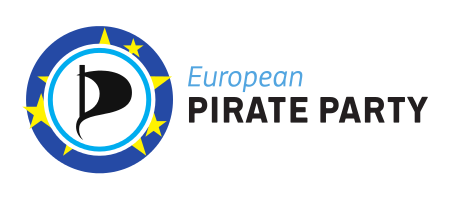PIRATE MEP MARCEL KOLAJA:
On February 19, the Commission presented its white paper on Artificial Intelligence (AI): a European approach to excellence and trust. As previously explained on my blog, the topic is not merely a techy issue, but already impacts the life of many of us, be it applying for a job, ordering food, or content moderation software, etc. The proposal is open for consultation for any interested stakeholder or individual. The deadline for your remarks is May 19, 2020, in case you’d like to comment on it.
AI what?
It is difficult to define what Artificial Intelligence is; however, given that the paper will also be subject to public consultation, it would be important to have a clear definition of AI, so that at least everyone is on the same page what we understand by the term. The paper, however, suggests flexibility of the definition in light of future technological change and gives a long description:
“[…] main elements that compose AI[, which] are ‘data’ and ‘algorithms’. AI can be integrated in hardware. In case of machine learning techniques, which constitute a subset of AI, algorithms are trained to infer certain patterns based on a set of data in order to determine the actions needed to achieve a given goal. Algorithms may continue to learn when in use. While AI-based products can act autonomously by perceiving their environment and without following a pre-determined set of instructions, their behaviour is largely defined and constrained by its developers. Humans determine and programme the goals, which an AI system should optimise for.”
Promoting innovation is important; however,…
The objective of the paper is to promote the update of AI in Europe, while addressing the risk associated with it and defending the core European values—equality, non-discrimination, and high level of privacy. This is already a step in the right direction from previous drafts, which aimed only at the promotion of such technologies. As Pirates, naturally we support small and medium-sized businesses and the development of modern technologies. For instance AI driven algorithm can have crucial role for instance in identifying potential risks to public health. At the same time, there are certain risks that need to be addressed as well.
No to censorship
Given this objective, the draft still focuses on “high-risk applications” and “high risk sectors”. It is understandable that not all sectors and applications are impacted the same way. For instance, the approach regarding chatbots solving customer complaints, wouldn’t necessarily be the same as the approach used for health applications, that treat patient data. At the same time, we need to make sure we define high risk applications in a balanced way. The proposal defines “high risk” in a more limited manner than previous leaks suggested and focuses on cases where both the sector and the application constitute high risk. The criteria about exceptional instances where mandatory rules would apply regardless of the sector are unclear. For instance, in previous drafts, besides high risk sectors and uses, the Commission suggested criteria such as irreversible impact on individual, or unavoidable affect on individual.
For instance, AI is equally used by companies to moderate content on their platform—e.g. hash-matching, keyword filters, natural language processing—in order to remove content that goes against their terms and conditions or that is illegal. As a side effect, this often results in such technologies discriminating against vulnerable groups in a way that their content gets deprioritized or omitted. This can be due to the challenge of assessing context by algorithms or use of data sets that incorporate discriminatory assumptions.
Accessibility requirements for all
Data quality obligations for training data, transparency, and human oversight requirements are vital to address some of these issues. The Commission unfortunately only suggests keepings records, documents, and data sets during limited and “reasonable time period” and make them available to authorities upon request. Due to the scale of use of such applications it’s questionable that only competent authorities would be able to verify such compliance. Therefore, companies should be encouraged to release the training code and data sets under an open licence, as well as design such systems in transparent manner. This would allow more insight into how the system works and help with addressing many of the problems.
No to surveillance
Earlier leaks from the Commission demonstrate that there was a clear intention from the Commission to ban facial recognition technologies. However, during the internal consultation process of the Commission, this ban disappeared. This is a clear step back from fundamental rights point of view. The European Agency for Fundamental Rights issued a report recently that warned against the lack of accuracy of such technologies and stated that “several fundamental rights concerns remain even if there were a complete absence of errors.” The broad European debate suggested by the Commission needs to include all players, including civil society and academia, not just law enforcement from Member States.
Next steps
In the upcoming months, I will work on this subject, representing our group in the European Parliament’s opinion in the Internal Market and Consumer Protection (IMCO) committee, on the report addressing the civil liability regime for Artificial Intelligence, and on the report on Artificial Intelligence in criminal law and its use by the police and judicial authorities in criminal matters.


0 comments on “Artificial Intelligence: the future European approach”